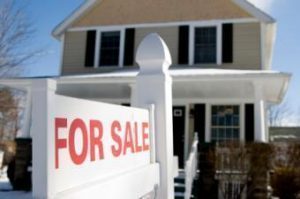 It’s no secret that the one-two punch of rising home prices and limited housing inventory has been making life difficult for would-be first-time homebuyers in markets around the country. However, a new consumer survey finds that it’s not just the first-timers who are feeling the effects.
It’s no secret that the one-two punch of rising home prices and limited housing inventory has been making life difficult for would-be first-time homebuyers in markets around the country. However, a new consumer survey finds that it’s not just the first-timers who are feeling the effects.
According to ValueInsured’s Q1 2018 Modern Homebuyer Survey, 62 percent of interested first-time homebuyers planning to purchase a home in “the near future” stated that they worry they won’t be able to afford the down payment for the homes they are seeking. When it comes to millennial first-time homebuyers, that percentage increases slightly to 65 percent. But what about current homeowners who are looking to sell and find someplace new?
ValueInsured’s survey found that 22 percent of all existing homeowners shared the same concern that they wouldn’t be able to afford the down payment on a new home—even after selling their current home. For homeowners aged 65 and older, the number increases to 28 percent, and it hits 36 percent for homeowners in rural areas. Owners of starter-priced homes are even more concerned, with 43 percent of those surveyed expressing concerns about being able to afford a new home after selling their current residence.
For ValueInsured’s purposes, starter-priced homes are defined as those the owners believe to be valued at less than $150k. For homeowners whose residences are valued at between $150k and $250k, that percentage stands at 25 percent of those surveyed.
Dialing the focus in tighter, ValueInsured reports that 27 percent of all surveyed millennial homeowners in the highly competitive Seattle market expressed doubts that they would be able to afford a down payment on a new home after selling their current one. For Generation X homeowners, the number is 26 percent.
According to the most recent First American Real Home Price Index, home prices increased by 2.9 percent in February. However, First American reported that homes became 5.1 percent more expensive compared to the same period last year, even as consumer house-buying power, how much one can buy based on changes in income and interest rates, declined 2.6 percent in February.
As reported recently by Unison, a homeownership investment firm, in the Los Angeles metro it would take 19 years for a resident earning the median salary to save enough for a 10 percent down payment on a median-priced home. In the San Diego metro, residents would need to save for 16 years to put 10 percent down on a median-priced home in the market. There are, of course, more affordable markets out there. In the Detroit-Warren-Dearborn metro, homebuyers need to earn a salary of only $35,909 to purchase a median-priced home with a 10-percent down payment.

 DSNews The homepage of the servicing industry
DSNews The homepage of the servicing industry









